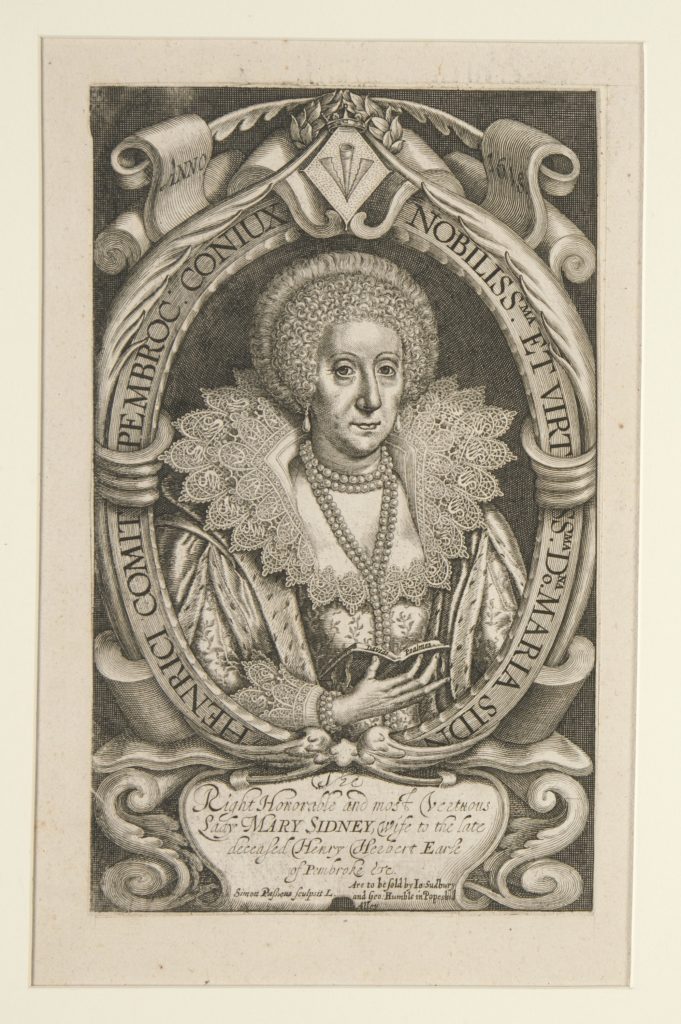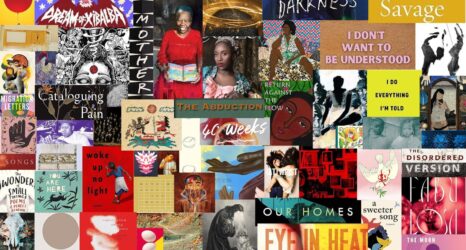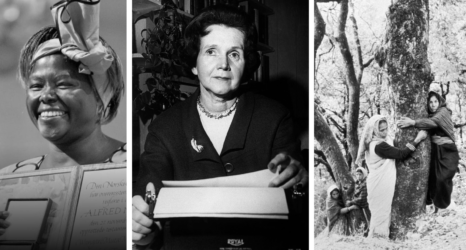We assume that William Shakespeare invented the Shakespearean sonnet—but really, we don’t know how that happened. Plus, we don’t even know who Shakespeare really was.
I’ve previously written for Ms. about Robin P. Williams’ book Sweet Swan of Avon, which makes a compelling case for the idea that Mary Sidney, Countess of Pembroke, could be the author of the sonnets and plays of Shakespeare. One recent article in The Atlantic on the subject mentioned Sidney, but then declared the author instead to be Emilia Bassano—a good poet, perhaps, but without the wherewithal and experience that Sidney certainly had.
In fact, despite a plethora of circumstantial evidence, most people refuse to consider Mary Sidney as the author of Shakespeare’s work. But why? Is it because the possibility is too real? Is it because if they did, there would be a revolution in the literary establishment?

The 1618 engraving above shows Mary Sidney holding open a volume of David’s Psalms. When she translated them, she invented 126 different verse forms. “Psalm 100,” Margaret Hannay, the author of an Oxford University Press biography of Mary Sidney, observed, “is in her version a sonnet, a 14-line verse form made famous by her brother Philip and by William Shakespeare.”
If “William Shakespeare” is Mary Sidney’s pen name, she’s the one who deserves credit for inventing the Shakespearean sonnet.
“I write the way I do [traditional prosody] because it’s the way that gives me most pleasure, and which finds me my way into the poem,” Marilyn Hacker said. “I never felt that choice compromised me as a feminist or a lesbian.”
Hacker was defending her choice against some contemporary and feminist poets who seem to have an entrenched prejudice against traditional forms, including the sonnet. They feel the need to smash or distort the form, to ignore the rules they consider patriarchal, yet they will still call their poem a sonnet.
But what if this traditional form was created by a woman—a radical feminist who broke the rules of her era and invented her own rules for the sonnet?
When I learned of the possibility that the greatest literary genius of the English language—the star of the male-dominated Western Canon, the brilliant neologist, the inventor of the Shakespearean sonnet, the poet of the Sonnets—was a woman, I started writing sonnets. I followed those rules. Instead of smashing them, I wanted to take them to heart. I wanted my heart to beat with the iambic pentameter heartbeat.
Many heartbeats later, I issued a defense of them, offering practical advice for poets interested in learning the pleasures of writing in form in a short video.
In this video, the fabulous Shakespearean actor David Tennant recites a sonnet by Shakespeare. British actor John Marcus Powell recites a sonnet by Marcia Karp. I recite a sonnet of my own: “Crows,” recorded outdoors with serendipitous crow calls.
It ends with these lines apropos to Mary Sidney:
The crows are girls that no one listened to,
whose rituals and wishes no one knew.
Author’s note: Since posting this article, scholars have reminded me that Shakespeare was not the inventor of the Shakespearean sonnet. Still, Mary Sidney did invent 126 different verse forms, and “Shakespeare” and Mary Sidney’s brother did make the Shakespearean sonnet famous.





